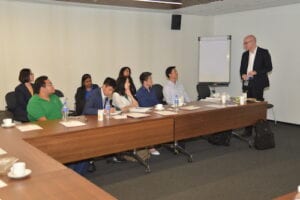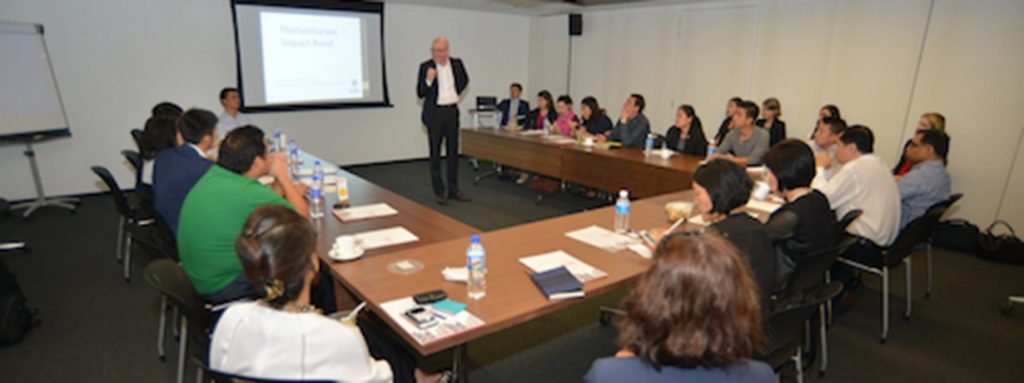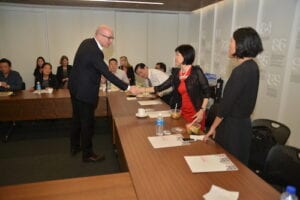16 February 2016
SINGAPORE – AVPN and AVPN member, the International Committee of the Red Cross (ICRC), hosted a roundtable discussion centered on the recently launched Humanitarian Impact Bond (HIB). The afternoon began with a presentation on the HIB by Yves Daccord, Director-General of the ICRC which was followed by an engaging dialogue with the audience.
Daccord began by giving an overview of the current state of conflict zones and illustrating the fact that “over 90 million people suffer from physical disability yet only 10% of those actually have access to physical rehabilitation services”. This was one of the main drivers behind the launch of the HIB by the ICRC and the Belgian government. It is hoped that this model will help to increase the scale and social impact of inclusive physical rehabilitation services globally.

Questions and discussions then ensued with the audience. Members were concerned with the impact assessment process, potential social investors, and the proposed financial returns. Tan Shuo Yan, Regional Social Impact Associate from Grab, questioned ICRC’s existing measurement methods and proposed as an alternative, a more sustainable metric would be able to illustrate the model’s success. Kevin Moon, Project Manager at BoP Hub, raised possible sources of potential social investors, while Matt Zhou, Executive Director at Equity Capital, expressed positive interest from an investor’s perspective but was keen to see a multi-year evaluation in place.



















